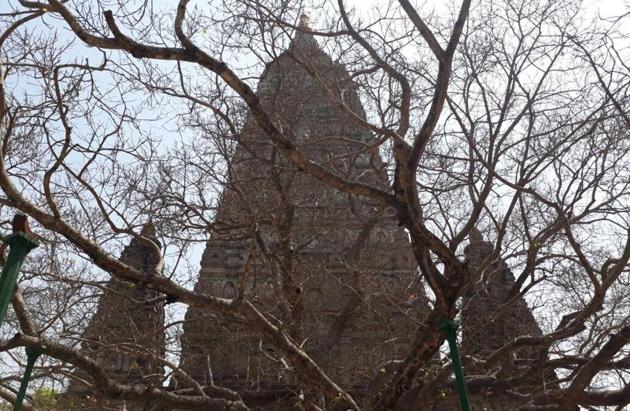Gaya’s Bodhi tree fails to sprout leaves, raises BTMC concern
The Mahabodhi tree, considered a direct descendant of the original specimen planted in 288 BC, under which lord Buddha attained enlightenment, is fast drying up.
The legendry Mahabodhi tree at the UNSECO world heritage site of Bodh Gaya is fast drying up, causing concern to its caretaker the Mahabodhi Temple Management Committee (BTMC).

The Peepal tree, under which lord Buddha is believed to have attained enlightenment has shed its leaves - quite common in autumn - but, unlike other trees, which have sprouted new leaves, the Bodhi tree is yet to show regeneration.
The sudden shedding of its leaves and unusual delay in sprouting new leaves has prompted BTMC secretary N Dorjee to visit Dehradun to take up the issue with a botanical scientists who had helped revive the tree three years back. The BTMC had then gone in for treatment of the tree under the guidance of the Dehradun-based scientist.
As per BTMC sources, scientists from Dehradun had visited Bodh Gaya and studied the Bodhi tree three months ago, but found the tree to be in “good health” with no sign of decay.
The much revered Mahabodhi tree is considered as a direct descendant of the original specimen planted in 288 BC, under which lord Buddha attained enlightenment.
The Bodhi Peepal tree is a centre of veneration for Buddhists all over the world and the leaves it sheds are picked up by devouts and preserved with much veneration.
Senior BTMC member Arvind Kumar Singh attributed the unusual falling of leaves from the tree to the unusual weather conditions, with temperature crossing an unprecedented 40 degree Celsius in March itself. He said there was nothing to worry because it had happened in the past too.
With Gaya temperature crossing 41 degree Celsius in March, Met said it was five degree above normal.





